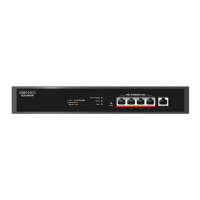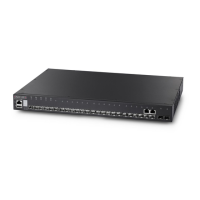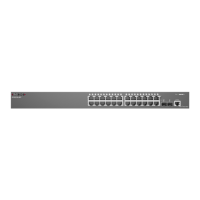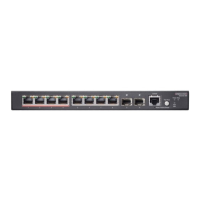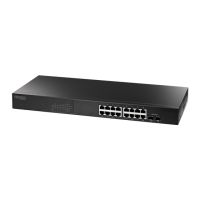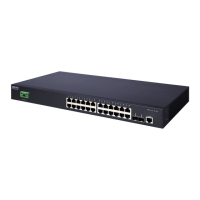C
HAPTER
6
| VLAN Configuration
IEEE 802.1Q VLANs
– 172 –
PARAMETERS
These parameters are displayed:
Modify VLAN and Member Ports
◆ VLAN – ID of configured VLAN (1-4094).
◆ VLAN Name – Name of the VLAN (1 to 32 characters).
◆ Status – Enables or disables the specified VLAN.
◆ Remote VLAN – Shows if RSPAN is enabled on this VLAN (see
"Configuring VLAN Groups" on page 170.
◆ Interface – Displays a list of ports or trunks.
◆ Port – Port Identifier. (Range: 1-26)
◆ Trunk – Trunk Identifier. (Range: 1-12)
◆ Mode – Indicates VLAN membership mode for an interface.
(Default: Hybrid)
■
Access - Sets the port to operate as an untagged interface. The
port transmits and receives untagged frames on a single VLAN only.
Access mode is mutually exclusive with VLAN trunking (see "VLAN
Trunking" on page 163). If VLAN trunking is enabled on an
interface, then that interface cannot be set to access mode, and
vice versa.
■
Hybrid – Specifies a hybrid VLAN interface. The port may transmit
tagged or untagged frames.
■
1Q Trunk – Specifies a port as an end-point for a VLAN trunk. A
trunk is a direct link between two switches, so the port transmits
tagged frames that identify the source VLAN. Note that frames
belonging to the port’s default VLAN (i.e., associated with the PVID)
are also transmitted as tagged frames.
◆ PVID –
VLAN ID assigned to untagged frames received on the interface.
(Default: 1)
When using Access mode, and an interface is assigned to a new VLAN,
its PVID is automatically set to the identifier for that VLAN. When using
Hybrid mode, the PVID for an interface can be set to any VLAN for
which it is an untagged member.
◆ Acceptable Frame Type – Sets the interface to accept all frame
types, including tagged or untagged frames, or only tagged frames.
When set to receive all frame types, any received frames that are
untagged are assigned to the default VLAN. (Options: All, Tagged;
Default: All)
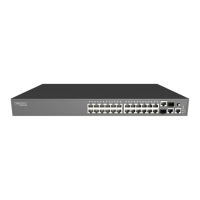
